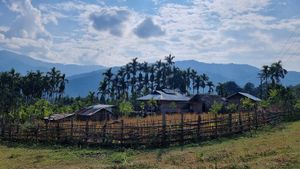The Seven Sisters of India, nestled in the northeastern part of the country, comprise Arunachal Pradesh, Assam, Meghalaya, Manipur, Mizoram, Nagaland, and Tripura. This region, known for its breathtaking landscapes, rich cultural heritage, and vibrant festivals, remains one of India's most untouched and mesmerising territories. In this comprehensive guide, we delve into everything you need to know about the Seven Sisters, from their unique cultural identities to the myriad of experiences they offer.
For the unversed, Seven Sisters stand as a testament to nature's artistry, with landscapes that range from the snow-capped peaks of Arunachal Pradesh to the lush greenery of Meghalaya's rain-soaked hills. The region's geographical isolation has preserved its untamed beauty, making it a haven for adventurers and nature enthusiasts alike. Beyond its natural allure, the northeastern states boast a peppy cultural scene, with festivals that light up the calendar, traditional dances that narrate ancient tales, and crafts that have been passed down through generations.
Here’s all you need to know about the Seven Sisters of India
Arunachal Pradesh

Arunachal Pradesh, India's easternmost state, is a haven for adventurers and nature lovers. It's a place where the sun first rises in India, hence the state is known by the moniker ‘Land of the Dawn-Lit Mountains.’ The state is renowned for its pristine beauty, encompassing lush forests, unexplored passes, and serene monasteries. Tawang Monastery, Asia’s second-largest monastery, offers a glimpse into Buddhist culture and stunning views of the Tawang-Chu valley. The Namdapha National Park, a biodiversity hotspot, invites wildlife enthusiasts to explore its rich flora and fauna.
Assam

The gateway to the northeast, Assam, is synonymous with expansive tea gardens and the Brahmaputra River's tranquil waters. The state's cultural capital, Guwahati, houses the revered Kamakhya Temple. The Kaziranga National Park, a UNESCO World Heritage Site, is home to the one-horned rhinoceros, making it a must-visit for wildlife lovers. The annual Bihu festival celebrates Assamese life and culture, marked by traditional dance, music, and sumptuous feasts.
Meghalaya

Meghalaya, translating to the 'Abode of Clouds', is famous for its rainfall, mystical clouds, and the living root bridges meticulously crafted by the Khasi tribes. The capital, Shillong, often referred to as the ‘Scotland of the East,’ boasts colonial-era charm and a vibrant music scene. The awe-inspiring Cherrapunji and Mawsynram, the wettest places on Earth, offer breathtaking landscapes and waterfalls, making it a paradise for nature lovers.
Manipur

Manipur, described as the ‘Jewel of India’ by Jawaharlal Nehru, is a land of natural beauty and cultural wealth. The Loktak Lake, famous for its phumdis (floating islands), and the Keibul Lamjao National Park, the world's only floating national park, are notable attractions. The classical Manipuri dance, with its graceful movements and exquisite costumes, represents the state's rich cultural heritage.
Mizoram

Mizoram, with its rolling hills and valleys, vibrant festivals, and warm hospitality, offers a tranquil retreat. Aizawl, the state capital, provides panoramic views of the Tlawng river valley. The Chapchar Kut festival, celebrated in March, showcases Mizo traditions and cultural extravaganza, including traditional dances, music, and costumes.
Nagaland

Nagaland is often called the ‘Land of Festivals’ due to the numerous festivals celebrated by its various tribes, each showcasing their rich culture and traditions. The Hornbill Festival, held in December, is a significant cultural extravaganza that brings together all the tribes of Nagaland, offering visitors a unique opportunity to experience the state's diverse heritage, including warrior log drums, traditional dances, and crafts.
Tripura

Tripura, a state with a rich history and cultural tapestry, is home to magnificent palaces, ancient temples, and diverse wildlife. The Ujjayanta Palace in Agartala, a former royal palace, now serves as a museum showcasing the region's art, culture, and history. The state's tribal festivals, such as Kharchi Puja and Garia Puja, add to the vibrant cultural mosaic of the Seven Sisters.
Travelling to the Seven Sisters
The Seven Sisters of India, with their unparalleled natural beauty and rich cultural heritage, offer a unique travel experience. However, visitors should be mindful of the special permits required for certain areas, especially in Arunachal Pradesh and Nagaland. The best time to visit is between October and April, when the weather is most pleasant for exploring the outdoors.


_1708324121947_thumb_1200.jpeg?w=3840&q=75)

%20(1)_1706945119958_thumb_300.jpeg)
_1682479787005_thumb_300.png)
_1684308697228_thumb_300.png)
_1683636329143_thumb_300.png)
